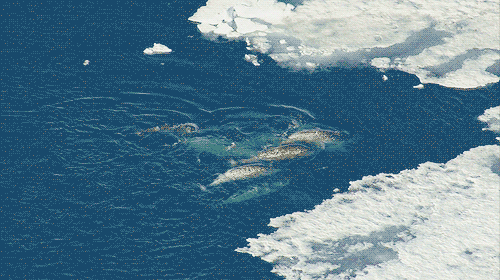Daily Life
Daily Life
Weekdays
Weekends
Buses
Food
Daily life here in Costa Rica, at least for me, is not necessarily all that different or much more exciting than daily life in the U.S. The major difference is since my workload is a lot lighter here, I have a lot more free time.
A typical week may play out like this. Every day, I usually get up between 7:30-8:00 am. Even on weekends when I don’t have plans, my body is used to waking up early and I usually never sleep to my alarm. This may be because the sun is always up my 6:00 am and my internal body clock has just adjusted to this. On Monday, I don't have class until 1 pm, but I usually don't get home until 7:30-8:00 pm, which makes Monday my busiest day. I usually spend the first half of the day doing random stuff, unless I have something I need to prepare for a class, such as an exam or presentation. On Tuesday, I have class at 10:00 am until 11:40 am, and I have a break to go back home and eat lunch before I have my other class at 3:00 pm, which usually is a little under two hours.
By Tuesday night, I usually pretty tired (since Monday is always a long day) and I don't do too much since I have no class on Wednesday. This makes Wednesday a day to relax or get a head start on work for Thursday and Friday. Occasionally, I have gone on day trips. For example, one week I went somewhere with my host mom for the day and last week, I went to San José to visit two museums. The rest of my week is really easy class wise, with only one class Thursday and Friday, with both starting at 10:00 am.
On weekends, I've gone on quite a few trips, some sponsored by IFSA and some as a part of a class. Otherwise, I may go a few places with my host parents, do watch, or watch a few things on Netflix.
In order to get around, I usually take the bus. I live in Barva and la Universidad Nacional is in Heredia, so I always need to take the bus to get to and from class. One round trip costs about $0.35, and it can take anywhere from 10-30 minutes for the bus to get from Barva to Heredia or vice versa, but it usually takes about 15-20 minutes. Other buses, to San José for example, cost a bit more, but still under $1 one way usually unless it's a few hour trip. That being said, if you plan out which buses you need to take, it is pretty easy to get around, even if you're used to having a car like me.
With my host family, breakfast usually consists of eggs a mix of rice and beans called gallo pinto. We usually have freshly-squeezed orange juice as well, and my host parents also drink coffee. We sometimes have cereal or an egg sandwich too. Lunch and dinner are usually pretty similar, and almost always include rice and beans (a staple in Costa Rica). Sometimes my host mom needs to make food that's a little bit different for me because I'm a vegetarian. We almost always have either some type of fruit juice, usually made of cas, but sometimes mango, pineapple, or watermelon, or iced tea. I usually like everything my host mom makes. I don't have to do any of my own laundry, which is very different from college in the U.S. If my host mom does not do it, the maid that comes on Mondays and Fridays comes.
More Posts from Simplyphytoplankton and Others

Phot by Jero Prieto
![Some Pictures Of The Diversity And Beauty Of Dinoflagellates, Coccolithophorids, And Diatoms. :]](https://64.media.tumblr.com/tumblr_lm54epEaFK1qkwn7no1_400.gif)
![Some Pictures Of The Diversity And Beauty Of Dinoflagellates, Coccolithophorids, And Diatoms. :]](https://64.media.tumblr.com/tumblr_lm54epEaFK1qkwn7no2_500.jpg)
![Some Pictures Of The Diversity And Beauty Of Dinoflagellates, Coccolithophorids, And Diatoms. :]](https://64.media.tumblr.com/tumblr_lm54epEaFK1qkwn7no3_500.jpg)
![Some Pictures Of The Diversity And Beauty Of Dinoflagellates, Coccolithophorids, And Diatoms. :]](https://64.media.tumblr.com/tumblr_lm54epEaFK1qkwn7no4_500.jpg)
![Some Pictures Of The Diversity And Beauty Of Dinoflagellates, Coccolithophorids, And Diatoms. :]](https://64.media.tumblr.com/tumblr_lm54epEaFK1qkwn7no5_400.jpg)
![Some Pictures Of The Diversity And Beauty Of Dinoflagellates, Coccolithophorids, And Diatoms. :]](https://64.media.tumblr.com/tumblr_lm54epEaFK1qkwn7no6_400.jpg)
Some pictures of the diversity and beauty of dinoflagellates, coccolithophorids, and diatoms. :]



What’s a whale fall?






Whale falls can be found throughout the ocean. This one was spotted in Channel Islands National Marine Sanctuary, off the coast of Southern California!
GIF transcript beneath the cut.
Keep reading

The Great Escape!
One of the biggest threats to sea turtles, such as the loggerhead turtle (Caretta caretta) pictured here, is being accidentally caught and killed in fishing nets. Trapped in a net, the turtles are dragged through the water with no access to the surface to breathe, causing them to drown.
To address this problem, NOAA Fisheries worked with the shrimp trawling industry to install escape hatches into their nets called Turtle Excluder Devices, or TEDs. A crosshatch of bars in the middle of the net create a grid large enough for small shrimp to pass through, but not turtles and other large animals. When they hit the grid, they can then swim out through a hole in the net and escape.
Before TEDs were installed, an estimated 70 to 80 percent of turtle strandings on beaches were caused by shrimp nets. But since they were installed by U.S. shrimpers in the Gulf of Mexico in the late 1980s, strandings caused by shrimp nets are estimated to be down by at least 44 percent.
Photo: NOAA

This impending issue has been known for some time. I believe it has a role in the resurgence of nationalism, immigration debates, and isolationism in certain countries - a bit of preemptive door slamming…
143 Million People May Soon Become Climate Migrants, World Bank Warns
Climate change will transform more than 143 million people into “climate migrants” escaping crop failure, water scarcity, and sea-level rise, a new World Bank report concludes.
Most of this population shift will take place in Sub-Saharan Africa, South Asia, and Latin America—three “hot spots” that represent 55 percent of the developing world’s populations.
This worst-case scenario is part of a ground-breaking study focused on the impacts of slow-onset climate, as opposed to more visibly dramatic events such as extreme storms and flooding. The report, Groundswell—Preparing for Internal Climate Migration, also shifts the focus from cross-border migration, which has drawn global attention as refugees and migrants flee war, poverty and oppression, to in-country migration, which involves many more millions of people on the move in search of viable places to live. The 143 million represent 2.8 percent of the three regions’ population.

“Yes, hello, are you aware that it’s Sea Turtle Week?"
This endangered hawksbill turtle wants to be sure you know! Hawksbills are just one of several species of sea turtle found within the waters of Hawaiian Islands Humpback Whale National Marine Sanctuary. Look closely and you can see a GPS-linked satellite tag on its shell. This tag helps NOAA researchers track its movements, so we can better understand which habitats are critical for hawksbill recovery.
(Photo: Don McLeish/NOAA)
[Image description: A close-up of a hawksbill turtle that is looking directly at the camera. A small GPS tag is attached to its shell.]

A shark on a reef is a definite sign that the reef is healthy! Years ago people were terrified if the saw a shark, now were horrified that we may not see sharks on the reef or anywhere, because we have killed over 90% in the last 50 years. We must end to this needless slaughter! Sharks are essential to keeping our oceans healthy and in balance! The oceans are the heart of our planet! Over 50% of the air we breath and 70% of the protein we eat comes from the ocean. Without our the ocean all life on this planet will die. Please be the change the world needs to survive!
Best immediate way to save sharks here in the US…Support Oceanas Shark Fin Trade Ban! Please sign, share the petition and support this effort! https://www.change.org/p/congress-ban-the-trade-of-shark-fins-in-the-u-s - #regrann (at Tiger Beach)

This seems like something everyone should know if they’re in the sciences and/or interested in reading scientific papers.
-
 ididitforthedogs liked this · 9 years ago
ididitforthedogs liked this · 9 years ago -
 simplyphytoplankton reblogged this · 9 years ago
simplyphytoplankton reblogged this · 9 years ago

Blog dedicted to phytoplankton. Phytoplankton are microscopic organisms that are responsible for half of the photosynthesis that occurs on Earth. Oh, and they look like art... Follow to learn more about these amazing litter critters! Caution: Will share other ocean science posts!Run by an oceanographer and phytoplankton expert. Currently a postdoctoral researcher.Profile image: False Colored SEM image of Emiliania huxleyi, a coccolithophore, and the subject of my doctoral work. Credit: Steve Gschmeissner/ Science Photo Library/ Getty ImagesHeader image: Satellite image of a phytoplankton bloom off the Alaskan Coast, in the Chukchi SeaCredit: NASA image by Norman Kuring/NASA's Ocean Color Web https://earthobservatory.nasa.gov/images/92412/churning-in-the-chukchi-sea
158 posts







